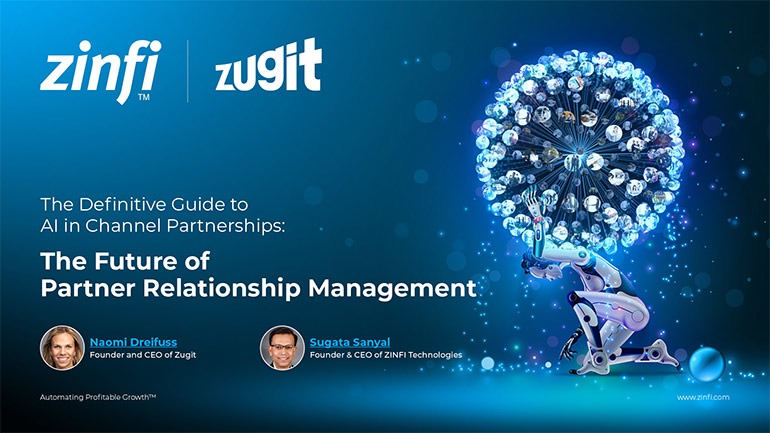Glossary - How to - PRM Tool
How to Choose the Right PRM Tool?
Introduction
A Partner Relationship Management (PRM) tool is a software solution designed to help businesses manage their partner ecosystems, streamline communication, and enhance collaboration. PRM tools provide a centralized platform for automating onboarding, tracking performance, and optimizing partner engagement. These tools are essential for companies that rely on indirect sales channels, such as distributors, resellers, and affiliates.
In partner management automation, PRM tools ensure seamless interactions between vendors and partners. By integrating essential functions like deal registration, content sharing, training modules, and performance tracking, businesses can maximize the potential of their partnerships. A well-implemented PRM tool enhances efficiency, reduces manual work, and fosters stronger, data-driven partner relationships.
Key Takeaways:
Identify Your Business Needs:
Before selecting a PRM tool, outline your specific business objectives. Ask questions like:
- Do you need onboarding automation for new partners?
- Are you looking for lead management and deal registration capabilities?
- How crucial is partner communication and engagement tracking?
By assessing these requirements, you can choose a tool that aligns with your growth strategy and enhances your partner network.
Evaluate Key Features:
A robust PRM tool should include essential features like:
- Partner Onboarding: Automated workflows for efficient onboarding.
- Deal Registration & Lead Management: Streamlined processes for tracking partner-led deals.
- Content & Training Modules: A knowledge base for partners to access marketing materials and training resources.
- Performance Analytics: Insightful dashboards to track partner engagement and sales performance.
Ensure Seamless Integration:
Your PRM tool should integrate with existing CRM, ERP, and marketing automation platforms to ensure data consistency. Look for API capabilities or pre-built integrations with Salesforce, HubSpot, or Microsoft Dynamics.
Assess User Experience (UX) and Scalability:
A user-friendly interface and scalable architecture are essential for long-term adoption. Ensure the platform is intuitive and can accommodate growing numbers of partners without compromising performance.
Compare Pricing and Support Options:
Evaluate pricing models, including subscription-based, tiered, or one-time licensing fees and consider vendor support services such as training, technical assistance, and community forums.
Summary of Key Takeaways:
Selecting the right PRM tool requires understanding your business needs, evaluating key features, ensuring integration with existing systems, prioritizing user experience, and assessing pricing and support. A well-chosen PRM tool can drive partner engagement and revenue growth.
Key Examples:
- Automotive Manufacturing: PRM tools help streamline dealership networks, manage sales leads, and optimize after-sales service collaboration.
- Consumer Electronics: These tools enable electronics manufacturers to coordinate marketing campaigns, share product training, and manage warranty claims with partners.
- Energy Production: Energy companies leverage PRM solutions to monitor supplier performance, automate compliance tracking, and enhance distributor collaboration.
- Financial Services: Banks and insurance firms use PRM software to manage referral programs, track broker performance, and facilitate compliance training.
- Food and Beverage: PRM platforms support supply chain transparency, assist distributor management, and streamline promotional campaigns.
- Healthcare Services: Hospitals and medical device manufacturers use PRM tools to manage supplier relationships, training certifications, and compliance workflows.
- Information Technology: IT vendors utilize PRM tools to onboard resellers, provide technical documentation, and monitor partner performance.
- Pharmaceutical Development: Pharmaceutical companies leverage PRM platforms to track clinical trial partnerships, ensure regulatory compliance, and enhance distributor relationships.
- Retail Industry: Retail brands use PRM systems to coordinate franchise operations, manage promotional campaigns, and optimize inventory distribution.
- Telecommunications: Telecom companies rely on PRM tools to manage service providers, track reseller performance, and ensure effective customer service collaboration.
Conclusion:
Choosing the right PRM tool is essential for businesses looking to optimize their partner networks and drive revenue growth. By focusing on business needs, key features, seamless integrations, user experience, and pricing, organizations can ensure they select a PRM solution that aligns with their strategic goals. Implementing an efficient PRM tool enhances communication, boosts partner engagement, and ultimately contributes to long-term business success. By leveraging the right PRM tool, businesses can improve partner relationships, optimize operational efficiency, and drive sustained growth.
Associated Keywords:















